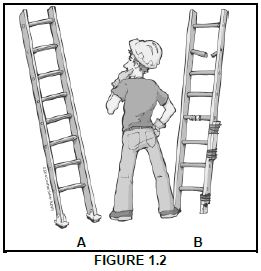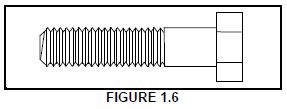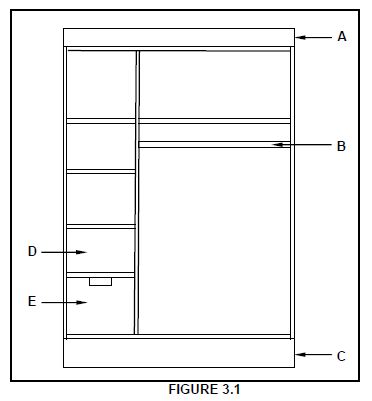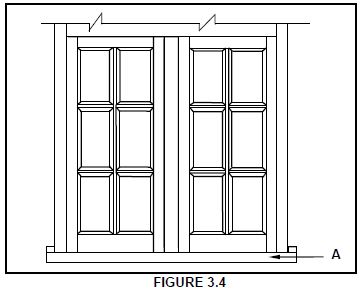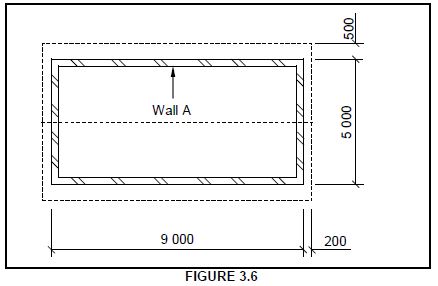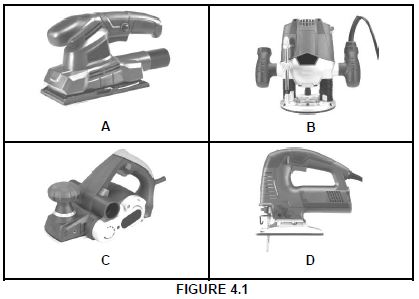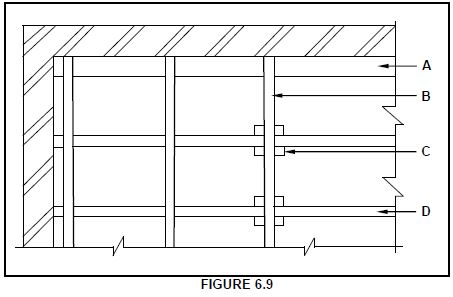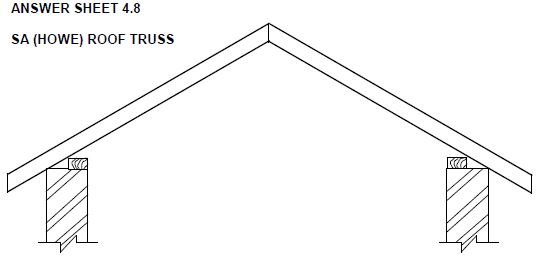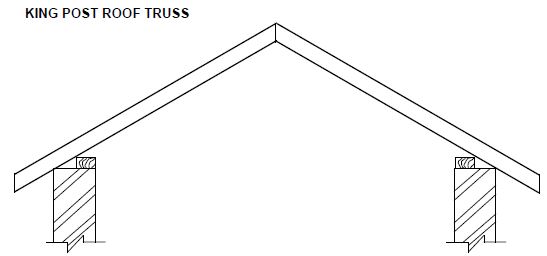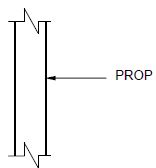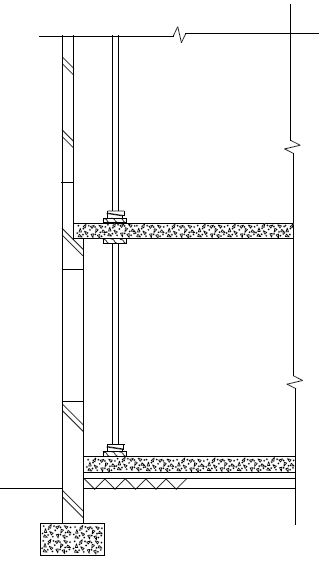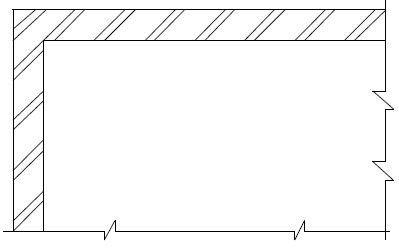CIVIL TECHNOLOGY (WOODWORKING) GRADE 12 QUESTIONS - NSC EXAMS PAST PAPERS AND MEMOS MAY/JUNE 2021
Share via Whatsapp Join our WhatsApp Group Join our Telegram GroupCIVIL TECHNOLOGY: WOODWORKING
GRADE 12
NATIONAL SENIOR CERTIFICATE EXAMINATIONS
MAY/JUNE 2021
REQUIREMENTS:
- Drawing instruments
- A non-programmable calculator
- ANSWER BOOK
INSTRUCTIONS AND INFORMATION
- This question paper consists of SIX questions.
- Answer ALL the questions.
- Read all the questions carefully.
- Answer each question as a whole. Do NOT separate subsections of questions.
- Number the answers correctly according to the numbering system used in this question paper.
- Start the answer to EACH question on a NEW page.
- Do NOT write in the margins of the ANSWER BOOK.
- You may use sketches to illustrate your answers.
- Write ALL calculations and answers in the ANSWER BOOK or on the attached ANSWER SHEETS. The SI unit for answers must be indicated next to the answer.
- Use the mark allocation as a guide to the length of your answers.
- Make drawings and sketches in pencil, fully dimensioned and neatly finished off with descriptive titles and notes to conform to the SANS/SABS Code of Practice for Building Drawings.
- For the purpose of this question paper, the size of a brick should be taken as 220 mm x 110 mm x 75 mm.
- Use your own discretion where dimensions and/or details have been omitted.
- Answer QUESTIONS 2, 3.6, 4.8, 5.2, 5.4, 5.5, and 6.9.2 on the attached ANSWER SHEETS using drawing instruments, where necessary.
- Write your CENTRE NUMBER and EXAMINATION NUMBER on every ANSWER SHEET and hand them in with your ANSWER BOOK, whether you have used them or not.
- Drawings in the question paper are NOT to scale due to electronic transfer.
- Google Images were used as the source of all photographs and pictures.
- Write neatly and legibly.
QUESTION 1: OHSA, SAFETY, MATERIALS, TOOLS, EQUIPMENT AND JOINING (GENERIC)
Start this question on a NEW page
1.1 Give ONE word/term for each of the following descriptions by choosing a word/term from the list below. Write only the word/term next to the question numbers (1.1.1. to 1.1.5) in the ANSWER BOOK, e.g. 1.1.6 casement
| curing; electroplating; galvanising; powder coating; paint; turpentine; sanding sealer |
1.1.1 Available in a water- or oil-based liquid (1)
1.1.2 Allows concrete to achieve its optimal strength (1)
1.1.3 Coating a metal by the process of electrolysis (1)
1.1.4 Can be melted again because no chemical process is involved (1)
1.1.5 Adds strength to the original uncoated metal (1)
1.2 FIGURE 1.2 below shows equipment that is used on a construction site.
1.2.1 State TWO materials that the equipment can be manufactured of. (2)
1.2.2 Deduce from FIGURE 1.2 the safest option to use, A or B. Motivate your answer. (2)
1.2.3 Explain the purpose of the equipment in FIGURE 1.2. (1)
1.2.4 How far from a wall should the base of a ladder be placed to ensure that it is positioned safely? (1)
1.3 A laser level is often used in construction.
1.3.1 Explain what you will determine if you use the laser level in EACH of the following cases:
- When installing a sewerage system for a building (1)
- When laying tiles against a wall (1)
1.3.2 Explain what will happen if the tripod is not wide enough when setting up the laser level. (1)
1.4 Explain what will happen if a worker manually lifts excessively heavy loads. (1)
1.5 The use of scaffolds is not permitted, unless inspected.
1.5.1 When should scaffolding be inspected? (1)
1.5.2 Who is responsible for the inspection of the scaffolding? (1)
1.6 FIGURE 1.6 below shows a joining fixture that can be used on building sites.
1.6.1 Identify the joining fixture. (1)
1.6.2 Name the part that should be used with the joining fixture. (1)
1.6.3 Explain why it is a better option to use this joining fixture to join two steel sections. (1)
[20]
QUESTION 2: GRAPHICS AS MEANS OF COMMUNICATION (GENERIC)
Start this question on a NEW page.
FIGURE 2 on the next page shows a drawing that appears on a building plan. Analyse the drawing and complete the table on ANSWER SHEET 2.
[40]
QUESTION 3: CUPBOARDS,CASEMENTS, WALL-PANELLING AND QUANTITIES (SPECIFIC)
Start this question on a NEW page.
3.1 FIGURE 3.1 below shows the inside of a built-in cupboard without doors. Study the sketch and answer the questions that follow.
3.1.1 Describe the purpose of parts A, B and C respectively. (3)
3.1.2 Differentiate between parts D and E by identifying it. (2)
3.1.3 State the depth of a built-in cupboard. (1)
3.2 Name TWO board products that will be most suitable for the construction of the carcass of a built-in cupboard. (2)
3.3 Describe the advantage of a built-in cupboard that is built up to ceiling height. (1)
3.4 FIGURE 3.4 below shows an external elevation of an incomplete casement. The casement can be extended by placing a new part on top of the existing casement. Study the picture and answer the questions that follow.
3.4.1 Name the omitted part that can be placed on top of the casement to make it a complete casement. (1)
3.4.2 Name ONE purpose of the part that can be placed on top of the casement. (1)
3.4.3 Identify member A.(1)
3.4.4 Draw a neat freehand sketch of the sectional view of the profile of part A in your ANSWER BOOK.(3)
3.5 FIGURE 3.5 below shows a vertical section through a wall panel which was constructed incorrectly. The wall panelling stretches from the floor to the ceiling. Study the picture and answer the questions that follow.
3.5.1 Identify THREE mistakes that were made during the construction of the wall panelling. (3)
3.5.2 Draw, in your ANSWER BOOK, a neat sketch of a vertical sectional view of ONE tongue and groove board used in the construction of wall panelling. (3)
3.6 FIGURE 3.6 below shows the floor plan of a building with a gable roof with corrugated roof sheeting as roof covering. Study the figure and answer the questions. Show ALL calculations.
Use the following specifications:
- The walls are 220 mm thick.
- The length of one ridge capping is 2 350 mm.
- The true length of a rafter is 2 900 mm.
- The corrugated roof sheeting projects 50 mm past the rafter.
Use the dimension sheet on ANSWER SHEET 3.6 and calculate the following (all units must be shown in METRES):
3.6.1 The total length of fascia boards needed for the building (4)
3.6.2 The length of ONE corrugated roof sheet (2)
3.6.3 The number of ridge cappings needed (3)
[30]
QUESTION 4: ROOFS, CEILINGS, TOOLS, EQUIPMENT AND MATERIALS (SPECIFIC)
Start this question on a NEW page.
4.1 FIGURE 4.1 below shows four machines. Study the pictures and answer the questions that follow.
4.1.1 Name this group of machines. (1)
4.1.2 Identify A. (1)
4.1.3 Explain why it is necessary to wear safety goggles when operating the router in B. (1)
4.1.4 Explain TWO reasons why it is necessary to check the timber for loose knots and nails before using the electric planer in C. (2)
4.1.5 Explain how you would ensure an absolute straight cutting edge when using a jig saw, as indicated in D. (1)
4.1.6 Explain what needs to be done with the work piece before you can start cutting a circle from the centre of timber with a jig saw. (1)
4.1.7 What should you do with the work piece before you can start working with a jig saw? (1
4.2 The spindle moulder, like all other machines must be maintained, lubricated and serviced regularly. Describe any other TWO aspects to take care of for this machine. (2)
4.3 Which part of the belt sander must be replaced after extensive use? (1)
4.4 Choose a description from COLUMN B that matches an item in COLUMN A. Write only the letter (A–L) next to the question numbers (4.4.1 to 4.4.8) in the ANSWER BOOK, e.g. 4.4.9 M.
| COLUMN A | COLUMN B |
| 4.4.1 Linseed oil 4.4.2 Factor for the selection of timber for skirting 4.4.3 Visual grading 4.4.4 Wax 4.4.5 Factor for the selection of timber for folding table 4.4.6 Sanding sealer 4.4.7 Mechanical grading 4.4.8 Varnish |
|
(8 x 1) (8)
4.5 Name TWO different types of trap doors that can be fitted in a ceiling. (2)
4.6 What are the minimum dimensions recommended for the opening of a trap door? (1)
4.7 Differentiate between purlins and battens according to their uses. (2)
4.8 ANSWER SHEET 4.8 shows the incomplete views of a South African (Howe) roof truss and a king post roof truss.
4.8.1 Complete the drawings in good proportion to show the difference in the construction of the respective roof trusses. (12)
4.8.2 Label and dimension any TWO parts of the South African (Howe) roof truss. (4)
[40]
QUESTION 5: CENTERING, FORMWORK, SHORING AND GRAPHICS AS MEANS OF COMMUNICATION (SPECIFIC)
Start this question on a NEW page.
5.1 Draw, in good proportion, in your ANSWER BOOK a side view of the ribs and ties as used at the bottom of centering. Draw only ONE rib with the ties. Show ONE label with dimensions on the drawing. (6)
5.2 ANSWER SHEET 5.2 shows a part of a timber prop for the formwork of a floor slab. Use ANSWER SHEET 5.2 and draw in good proportion a vertical section through the top part of the formwork for a floor slab. The end grain of the soffit board must be shown. Shows any THREE labels. (10)
5.3 Explain why the minimum distance between the wall and the dead shore should NOT be less than 1 200 mm. (1)
5.4 ANSWER SHEET 5.4 shows the incomplete sectional view of a dead shore for a multistorey building. Complete the drawing on ANSWER SHEET 5.4 using a line diagram to draw the two dead shores and the needle just above the first floor slab. (3)
5.5 Use ANSWER SHEET 5.5 and draw to scale 1 : 1 the top rail and stile of an assembled ISOMETRIC view of a long- and short-shoulder tenon and mortice joint. The timber used for the joint is 60 mm x 21 mm. Do NOT show hidden details.
Start the drawing from the given corner on the ANSWER SHEET. (10)
[30]
QUESTION 6: SUSPENDED FLOORS, STAIRCASES, IRONMONGERY, DOORS AND JOINING (SPECIFIC)
Start this question on a NEW page
6.1 Various options are given as possible answers to the following questions. Choose the answer and write only the letter (A–D) next to the question numbers (6.1.1 to 6.1.5) in the ANSWER BOOK, e.g. 6.1.6 C.
6.1.1 The minimum length of a tread/going is ...
- 250 mm.
- 200 mm.
- 300 mm.
- 350 mm.
(1)
6.1.2 The riser of a timber staircase ...
- is the part on which you step when using the staircase.
- is the vertical member between two consecutive treads.
- secures the handrail to the balustrade.
- must always be more than 200 mm.
(1)
6.1.3 In a timber staircase the balustrade is …
- at the foot of the staircase.
- the vertical posts that hold up the handrail.
- where the newel post joins the landing.
- on top of the landing.
(1)
6.1.4 The nosing of the staircase ...
- is the overhang of the tread.
- has a minimum length of 200 mm.
- is between the newel posts.
- is the vertical distance between two balusters.
(1)
6.1.5 A quarter-landing staircase is also called a/an ...
- U-shaped staircase.
- left-sided staircase of a half landing.
- straight staircase with an intermediate landing.
- L-shaped staircase.
(1)
6.2 What is the minimum distance in a staircase between the pitch line and the ceiling? (1)
6.3 FIGURE 6.3 below shows THREE types of locks used in the building industry. Study the pictures and answer the questions that follow.
6.3.1 Identify locks A to C respectively. (3)
6.3.2 Describe ONE advantage of B. (1)
6.4 FIGURE 6.4 below shows the inside elevation of a framed ledged and braced
batten door with hinges. Study the drawing and answer the questions that
follow.
6.4.1 Identify parts A to C respectively. (3)
6.4.2 Describe ONE the purpose of B. (1)
6.4.3 Name the thickness of rail D. (1)
6.4.4 Identify the joint used at E. (1)
6.4.5 Explain the reason why the bottom ends of the tongue and groove boards run over the bottom rail of the door as indicated by F. (1)
6.5 Draw in your ANSWER BOOK, in good proportion, a vertical section through the top rail and raised panel of a four-panel door with a low lock rail and diminishing stiles. Label the stile on your drawing. (5)
6.6 Which items can be joined by using the following joining methods?
6.6.1 Gang nails (1)
6.6.2 Roofing nails (1)
6.6.3 Storm clips (1)
6.7 Draw in your ANSWER BOOK, in good proportion, the front elevation of an assembled view of a twin/double mortice and tenon joint to show a part of the rail, stile and the hidden detail of the twin/double tenons. (6)
6.8 State the purpose of an ant guard as used in suspended timber floors. (1)
6.9 FIGURE 6.9 below shows a part of the top view of a suspended timber floor.
6.9.1 Identify A–D. (4)
6.9.2 Draw on ANSWER SHEET 6.9.2 where the detail of the suspended floor in FIGURE 6.9 has been omitted, FOUR tongue and groove floorboards. The tongue and groove boards must run in length parallel to the long wall. NO hidden details are required. (4)
[40]
TOTAL: 200
| CENTRE NUMBER: |
| EXAMINATION NUMBER: |
ANSWER SHEET 2
| NO. | QUESTION | ANSWER | MARKS |
| 1 | Identify the type of plan in FIGURE 2. | 1 | |
| 2 | Deduce from the notes the brick force installation up to window height. | 1 | |
| 3 | Deduce the scale that is used for FIGURE 2. | 1 | |
| 4 | Identify number 1. | 1 | |
| 5 | Identify number 3. | 1 | |
| 6 | Identify number 5. | 1 | |
| 7 | Identify number 7. | 1 | |
| 8 | Identify number 8. | 1 | |
| 9 | Identify number 9. | 1 | |
| 10 | Name the item in the column for the notes in FIGURE 2 that must be installed in the bathroom. | 1 | |
| 11 | Draw the electrical symbol as described in the column for the notes in FIGURE 2 | 2 | |
| 12 | Deduce from FIGURE 2 which company printed the building plan. | 1 | |
| 13 | Give the abbreviation for number 2. | 1 | |
| 14 | State the colour that you would use to indicate the new dwelling on the site plan. | 1 | |
| 15 | Deduce from FIGURE 2 why the new dwelling is to be built on a corner plot. | 1 | |
| 16 | Deduce the plot number of the new dwelling illustrated in FIGURE 2. | 1 | |
| 17 | Which elevation is the closest to Protea Street? | 1 | |
| 18 | What is the plot number of the property on the western side of the dwelling? | 1 | |
| 19 | Give the abbreviation for number 6. | 1 | |
| 20 | State the slope at which the main sewer line should be installed. | 1 | |
| 21 | Describe what was done as revision 1. | 1 | |
| 22 | Deduce the dimension fault on the total width of the dwelling. | 1 | |
| 23 | State the project number for this plan. | 1 | |
| 24 | What is the width of the pavement? | 1 | |
| 25 | How many branch pipes are indicated on the plan? | 1 | |
| 26 | Explain the purpose of number 4. | 1 | |
| 27 | In what SI unit are the dimensions indicated on the plan? | 1 | |
| 28 | Draw a neat freehand drawing of the top view of the symbol of a single kitchen sink, as indicated in the SANS/SABS Code of Practice for Building Drawings. | 3 | |
| 29 | Recommend TWO types of building materials that can be used to finish the area at number 7. | 2 | |
| 30 | Calculate the total area of the plot. Give your answer in m². Show ALL calculations. | 3 | |
| 31 | Calculate the distance between Number 1 and Number 3 on the north elevation. Show ALL calculations. | 4 | |
| TOTAL | 40 |
| CENTRE NUMBER: |
| EXAMINATION NUMBER: |
ANSWER SHEET 3.6
3.6.1 3.6.2 3.6.3 | A | B | C | D |
| CENTRE NUMBER: |
| EXAMINATION NUMBER: |
ANSWER SHEET 4.8
SA (HOWE) ROOF TRUSS
| ASSESSMENT CRITERIA | MARK | CANDIDATE'S MARK |
| Correctness of drawing | 9 | |
| Any TWO labels and dimensions | 4 | |
| TOTAL | 13 |
| ASSESSMENT CRITERIA | MARK | CANDIDATE'S MARK |
| Correctness of drawing | 3 | |
| TOTAL | 3 |
| CENTRE NUMBER: |
| EXAMINATION NUMBER: |
ANSWER SHEET 5.2
| ASSESSMENT CRITERIA | MARK | CANDIDATE'S MARK |
| Correctness of drawing | 7 | |
| Any THREE labels | 3 | |
| TOTAL: | 10 |
| CENTRE NUMBER: |
| EXAMINATION NUMBER: |
ANSWER SHEET 5.4
| ASSESSMENT CRITERIA | MARK | CANDIDATE'S MARK |
| Correctness of drawing | 3 | |
| TOTAL | 3 |
| CENTRE NUMBER: |
| EXAMINATION NUMBER: |
ANSWER SHEET 5.5
| ASSESSMENT CRITERIA | MARK | CANDIDATE'S MARK |
| Correctness of drawing | 10 | |
| TOTAL | 10 |
| CENTRE NUMBER: |
| EXAMINATION NUMBER: |
ANSWER SHEET 6.9.2
| ASSESSMENT CRITERIA | MARK | CANDIDATE'S MARK |
| Correctness of drawing | 4 | |
| TOTAL | 4 |
